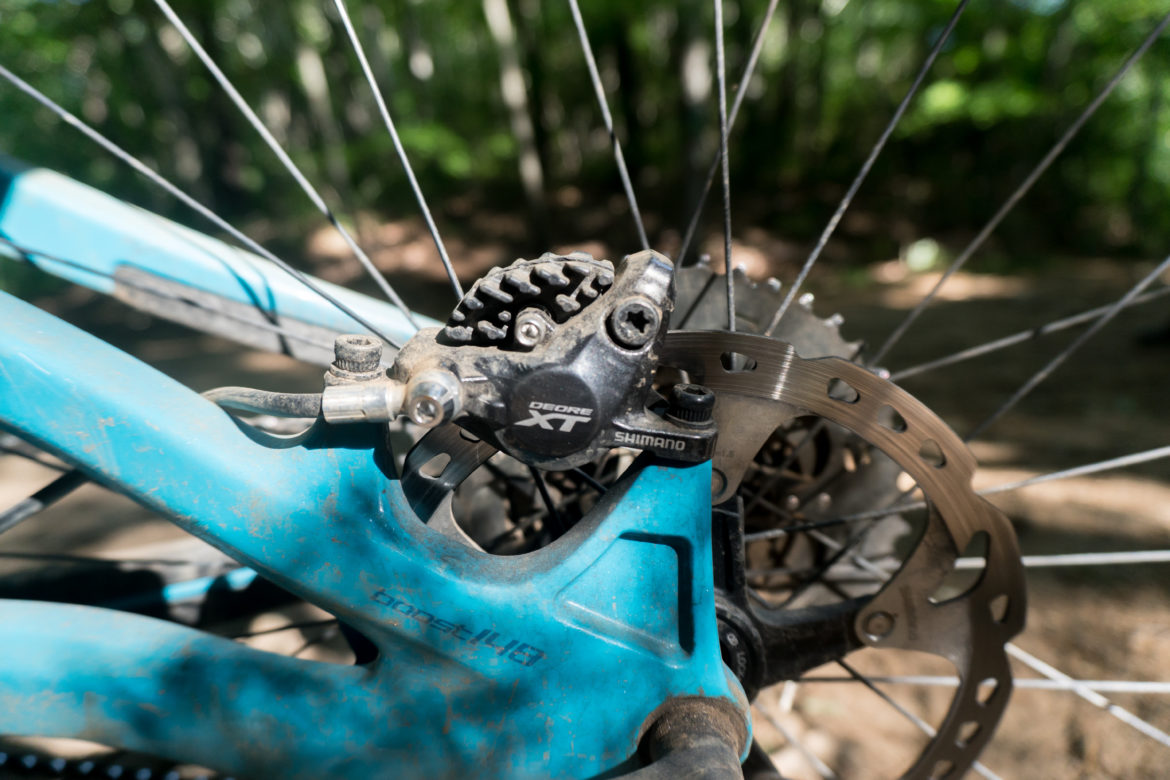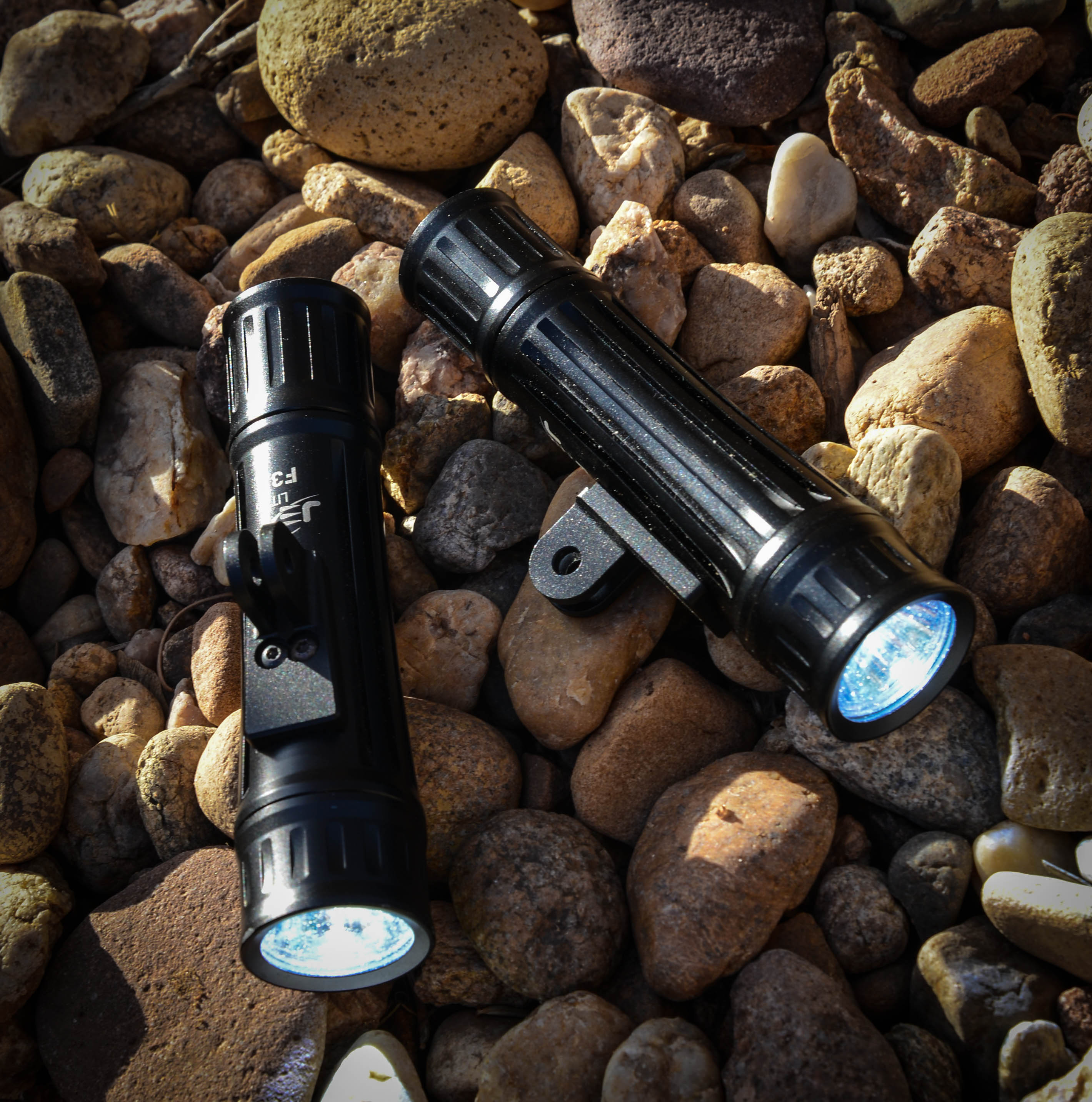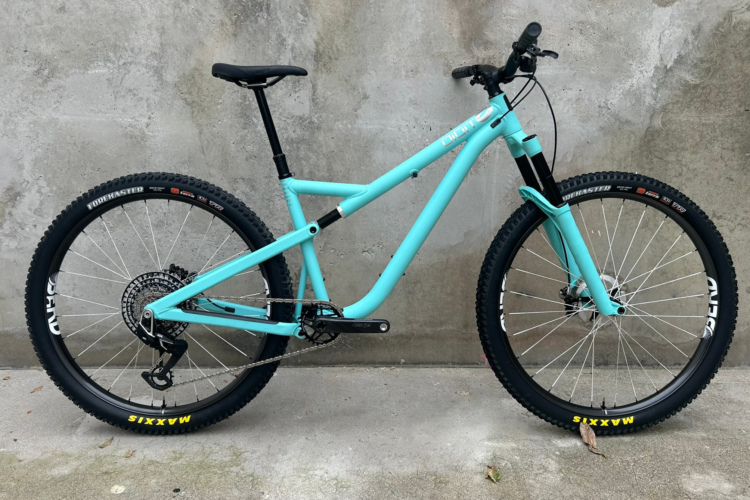
This spring I had the chance to review the Pivot Mach 6 Carbon, which is one of my dream bikes. With 160mm of travel up front and 155mm out back, the Mach 6 rolls on 27.5” wheels and likes to get down, and up. Built on the renowned efficiency of dw-link suspension, the Mach 6 is whatever you need it to be, whether that’s a long-travel trail bike for extended days in the saddle or a full-on enduro sled for heated competition. The playful nature of the Mach 6 supports its aggressive “can-do attitude,” and it looks fantastic.
They say beauty is in the eye of the beholder, but I would argue it’s in the eye of anyone who catches a glimpse of the Mach 6. Right after Da Vinci finished the Mona Lisa, he took some leftover paint and whipped up his vision of the ideal long-travel bike, with long and low geometry and short chainstays to keep things lively. Needless to say, he was ahead of his time.
Okay, so even if none of that stuff about Da Vinci is true, this is a beautiful bike. A wise man once told me the best bike is the one that makes you want to get out and ride, and the Mach 6 is hard to resist. I managed to rack up around 300 miles in just a few months of crappy winter weather, and I enjoyed every minute of it.
Specs (size medium)
- 160mm fork // 155mm shock
- 27.5″ wheels
- Head Tube Angle: 65.8 degrees
- Seat Tube Angle: 74.75 degrees (M)
- Chain Stay Length: 43.05cm
- Bottom Bracket Height: 34.59cm
- Standover Height: 72.62cm (M)
- Wheelbase: 118.03cm (M)
- Reach: 43.99cm (M)
- Price: from $5,199 for Race XT to way more
- Buy: Frames available at Backcountry.com; $3,500 aluminum builds available from Competitive Cyclist
The ride

Every manufacturer claims that their bikes send like downhill rigs and climb like XC machines, but the reality is that a bike that attempts to do everything can end up riding like a compromise. Somehow, the Mach 6 avoids that fate.
It does indeed pedal well. The steep, 74-degree seat tube angle keeps you over the pedals with the front wheel firmly planted, complemented by the efficiency of the dw-link suspension. Everyone knows the descents are the best part, but as someone who looks forward to techie climbs and all-day rides, I was really impressed with the pedaling platform of the Mach 6.

Once you’ve earned your elevation, the fun truly begins. The 160/155 travel combo is a substantial amount of cushion on paper, and it lives up to every expectation by soaking up small bumps and big hits alike. I try to get into Pisgah gnar as much as I can, but my daily ride in Asheville is decidedly more mellow. I was surprised to find the bike perfectly suited to smooth flow trails in addition to the mank.

Even if your own local trails don’t demand big suspension numbers, the Mach 6 never feels boring. It’s as lively as you want, and it delivers a playful and poppy experience when given a little rider input. It’s easy to move around on, and that same wheel that stayed planted on the climbs will come up in a heartbeat if you get your body back behind the saddle.

The components
Every component on a bike can be changed, but if you’ve just dropped six grand you probably don’t want to be browsing for upgrades after your first ride. Pivot sent over their Pro XT/XTR build, which will set you back $6,399. For that pretty penny you get quite a bit to go along with your carbon frame.
The Fox Factory 36 fork on the Mach 6 Carbon uses the FIT 4 damper, which is slightly less tunable than the newer GRIP2 but offers the convenience of a 3-position lever for quick adjustments when it’s time to grind back to the top of the mountain. It’s a similar story with the DPX2 shock, which offers low-speed compression and rebound adjustment, and a 3-position lever, in a slightly lighter package, but isn’t quite as customizable as the optional X2 upgrade (+ $265, + ~95g).

Optional upgrade aside, for all practical purposes the Kashima-coated suspension on the Pro XT/XTR build is top of the line.

While the squish is about as good as it gets, the DT Swiss M1700 wheels offer room for improvement, and their 10-degree engagement made me sorely miss the 3-degree response of my own i9 Torch hubs. If you can afford to splurge, Pivot offers an upgrade to carbon Reynolds hoops and i9 hubs for an extra $1,300. It’s certainly not essential, but I would argue that the wheel upgrade is a screaming deal.
The drivetrain is an 11-speed Shimano groupset that combines an XT shifter and cassette with a XTR derailleur and Race Face Aeffect crankset. Although Shimano and SRAM have both ventured into 12-speed territory, the truth is that 11 speeds get the job done just fine, and the decision probably helps keep the price down somewhat on this impressive machine.

On the whole, the Pro XT/XTR build brings together some really solid components. If there’s one area where I would have liked to see less of a compromise, it’s in the braking department. Shimano’s Deore XT brakes perform admirably, but the two-piston version on the Mach 6 seems out of place compared to the rest of the bike.

The quantity and quality of suspension, the aggressive geometry, a post-mount 180mm rear rotor, 800mm wide handlebars, and chunky Maxxis Minion tires – all these ingredients point to a serious need for speed, and the faster you go, the more important burly brakes become.
Pivot obviously made their decision for a reason, but (with my admittedly limited perspective) I’m inclined to disagree with it. Some quick internet browsing reveals a retail price increase of $50 for each four-piston Deore. If you’re thinking about dropping $6,399 on your riding habit, it’s hard to imagine the extra $100 would scare you off. Four-piston brakes offer a tangible increase in performance, and they’re a logical addition to the rest of the build.
While I’m complaining, I loved the feel and texture of Pivot’s Padloc grips, but they have a small amount of throttling action that occasionally made me wish for something with dual lock-on clamps (although not enough to actually change them). It’s a small gripe, and only noticeable because Pivot has given so much attention to every other detail.
I already mentioned the post mount 180mm rear rotor which eliminates the need for an adapter, but other finishing touches include a little fabric strip to keep debris and grit off the lower linkage, and cable housing clamps that prevent any annoying slap and rattle from loose housings inside the frame.


If you decide to embrace electric shifting, the frame includes a port for a Di2 battery located near the bottom bracket to keep the additional weight as low as possible. The finished product is incredibly polished, and it’s clear that the designers of the Mach 6 put a lot of thought into it.

Who is it for?
The Mach 6 Carbon is Pivot’s quiver-killer. It’s fairly svelte at 30 lbs, and the efficient pedaling platform allows it to excel on all-day rides or races. With a generous amount of suspension, it’s also more than willing to enter an enduro event or put some laps in at the park. If you can out-ride the capabilities of this bike, pat yourself on the back because you are pretty damn fast.
If your idea of happiness is a stable full of bikes, each built for a particular discipline, you might want to pass on the Mach 6. The Firebird will devour the descents faster, and the Mach 4 SL will give you a better shot at winning a podium spot in a competitive XC event. On the other hand, if you’re like me, with room to spoil yourself with one do-everything bike, the Mach 6 Carbon is an excellent choice that will handle anything you throw at it with casual ease. In the Trail/All-Mountain/Enduro-curious category, Pivot has delivered a winner.
Buy:
- Frames available at Backcountry.com
- Aluminum builds available from Competitive Cyclist
We would like to thank Pivot for loaning us the Mach 6 for review.


















